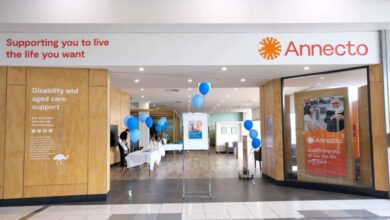Into the fray
Aged care needs improved support services to meet the needs of existing indigenous clients and encourage further use of services by the indigenous community, writes Gail Garvey.
Dementia is a growing health and social concern for all Australians. The prevalence of dementia in Australia is predicted to rise significantly as the proportion of older people in the population increases. From the evidence provided to date we know there is a lack of comprehensive statistical information from which the prevalence of dementia amongst indigenous people can be determined.
However, there is emerging evidence in some indigenous communities. Early research in 2002 reported 20 per cent of the 133 Aboriginal people aged 65 from a Queensland community had dementia. More recently, researchers have that reported dementia is an ‘epidemic’ in some Indigenous communities with the prevalence of dementia estimated to be five times that of the general Australian population in some Aboriginal communities. Evidence from these studies would make it amongst the highest known prevalence rates of dementia in the world.
The uptake of any mainstream health services by indigenous people is known to be poor; this is also presumably the case for dementia services. There are also many factors relating specifically to dementia that may further decrease likelihood of indigenous people utilising dementia services. For example, indigenous people may not see dementia as a reason for seeking residential care for their family as...they are just wandering...going bush...and we look after our elders in the community. It is also unknown to what extent dementia services are encouraging or supporting indigenous people to use their services.
The Queensland Institute of Medical Research, in collaboration with the CRC in Dementia, Queensland University of Technology, recently conducted a study to investigate the extent to which dementia services in Queensland are supporting and caring for indigenous people with dementia.
In order to do this we contacted and emailed a survey to aged care facilities providing support for dementia clients in three regional areas in Queensland (Brisbane, Toowoomba and Far North Queensland regions). The survey consisted of four sections: general service information; staff information; general client information and Aboriginal and Torres Strait Islander support.
Of the 169 aged care services contacted, 105 of these participated in the study. Most were located in a major city and provided high level nursing care. Most employed 30 or more staff and just over 40 per cent of these reported that they employed Indigenous staff. Of these, most facilities employed between one and five indigenous persons and most indigenous people were employed as assistants in nursing.
Participants were asked if their facility identified Aboriginal and Torres Strait Islander clients and 98 facilities provided a response to this question. Of those, 41 (41.8 per cent) facilities reported that they did not gather information on a client’s indigeneity. The facilities (57 or 58.2 per cent) that indicated they identified their client’s indigeneity did so as part of the admission procedure.
When aged care services were asked if any of their clients were indigenous, 102 facilities responded to this question. Of these six facilities (5.9 per cent) said that they did not know, 79 (77.5 per cent) said that they did not have any Indigenous clients and 17 facilities reported having Indigenous clients at the time of the survey.
Of the 17 facilities who reported they had indigenous clients, 12 facilities said that some of these clients had dementia. These facilities reported their indigenous clients had a range of dementia (vascular, early onset dementia, Alzheimer’s disease, alcohol related and mixed dementia).
Those services that indicated they had indigenous dementia clients were also asked what type of support they provide to those patients. Of the 12 facilities, six stated they did not provide specific support, three facilities said they just give the “usual”, one reported that a lady came in to play the didgeridoo and two facilities said they tried to engage with the local indigenous community by inviting indigenous organisations and hospital staff to come and visit clients.
From this small study we can report that most mainstream aged care services are not providing support for indigenous clients. The employment of indigenous staff by aged care facilities is encouraging with almost 50 per cent of those surveyed reporting that they employ indigenous staff.
However, we need to do more to ensure we know and understand the background of those clients that aged care services are providing a service to, and this includes indigenous clients.
Greater implementation of procedures to identify cultural heritage are required in addition to the provision of greater indigenous support services to meet the needs of existing indigenous clients and encourage further utilisation of services by the indigenous community.
Gail Garvey is program coordinator of the indigenous health program at the Queensland Institute of Medical Research.
Email: [email protected]





